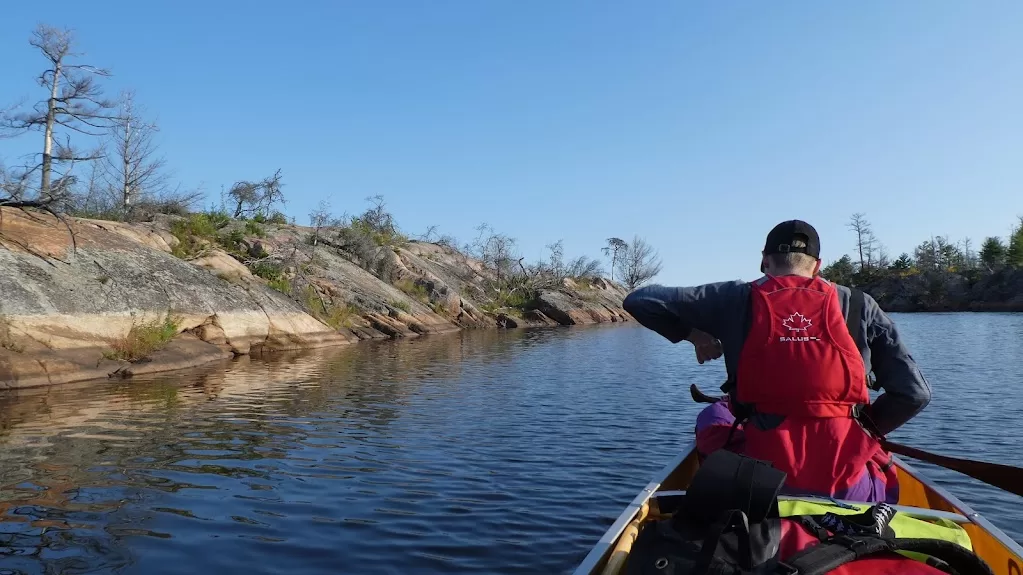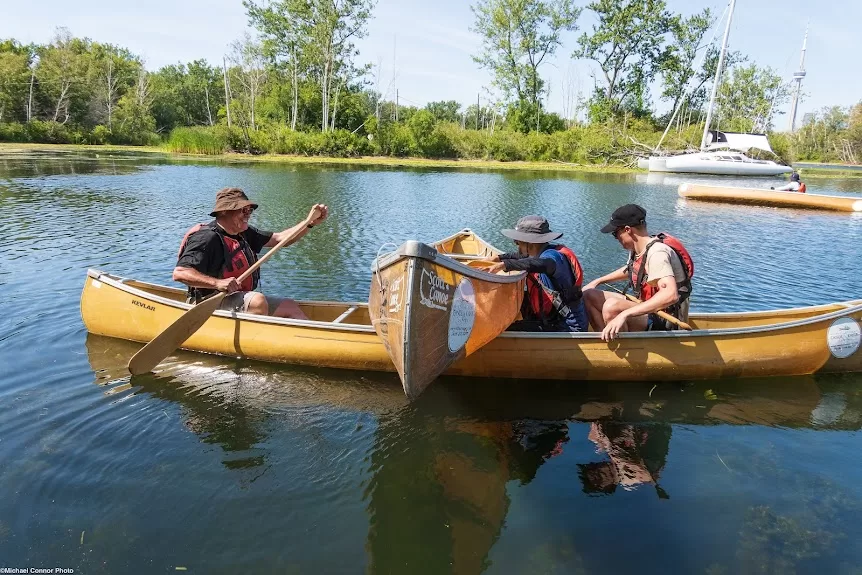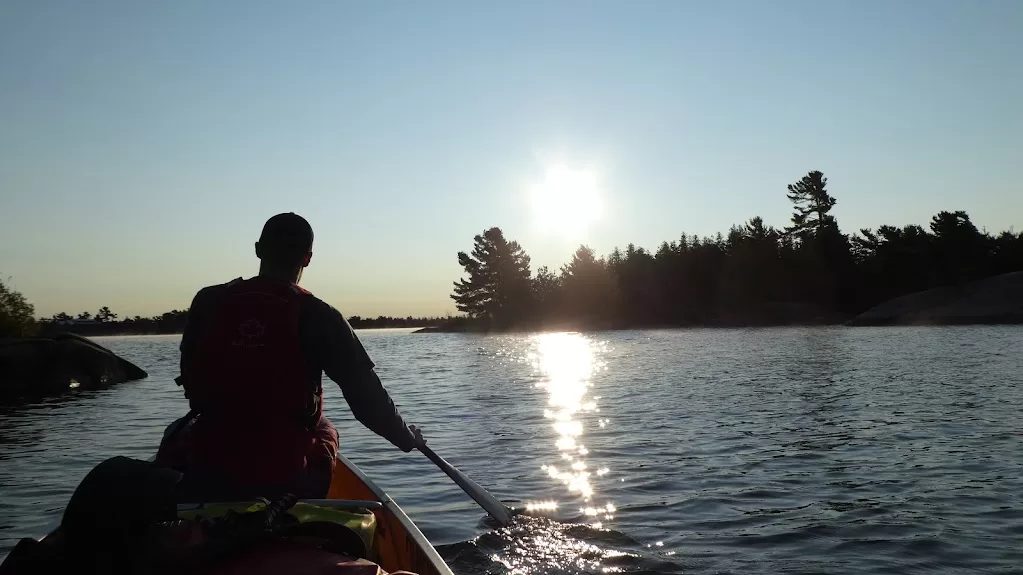
The following is the transcript from our podcast episode on Paddling Safety.
Pamela:
Hello, and good day, eh? Welcome to the Super Good Camping podcast. My name is Pamela.
Tim:
And I’m Tim
Pamela:
and we are from supergoodcamping.com. We are here because we are on a mission to inspire other families to enjoy camping adventures such as we have with our kids. Today is just us for a change.
Tim:
It’s a nice change.
Pamela:
Yeah, I shouldn’t say “just us” I should just say, “hey, it’s us.” Today, we wanted to talk about paddling, since that’s an integral part of backcountry camping particularly, but even if you’re front country camping, you can take your canoe with you and go for a paddle around the lake or wherever you are, and so I’m going to turn it over to Tim to talk about paddling safety.
Tim:
Essentially I wanted to do this because I was reading an article in Paddling Magazine, which is out of the States so all of the statistics are American. Finding Canadian stats that are anywhere near 2022 is very difficult to do, the most recent ones I could find were from 2017. That doesn’t really do what I’m looking to do. I wanted to see how the statistics have changed in the last couple of years, just because there are more people out there doing things that they normally don’t do. I was concerned about accidents, and fatalities, in particular. It happens. For American statistics, 2020 is the closest I could get to today. In 2020 there was a 26% jump in paddle sport fatalities, over 2019. Three-quarters of the fatalities had under 100 hours of experience on the water and 1/3 of them had less than 10 hours of experience. So that scares the crap out of me! Yeah, obviously, you have to go do it in order to gain that experience, but there are a lot of ways that you can be safe about that. The first thing that I would highly recommend if you’re not in a scouting group or something is to go take a lesson. To that point, Thomas and I have a wee bit of canoeing experience. We’re going this summer in August, down to the Harbourfront here in Toronto on Lake Ontario, and we’re taking a day-long tandem paddling course. This was largely inspired by Pamela buying me a gift certificate for Christmas or my birthday, I think.

Pamela:
Because I decided that Tim was certifiable.
Tim:
Okay, but that’s a different topic. But that’s a perfect segue for me. Yes, I paddle okay. There are numerous types of strokes. You can use the J stroke, which is used by a lot of solo canoeists because you can steer better with it. You’re not paddling in circles. I’m adequate. I’m not really good at it. I would like to get better. So that’s kind of my reasoning to go. It’s going to lead to me being certifiable. It’s going to lead me towards (hopefully next year) I can go and start my certification to be a paddling instructor. Which is cool. So there’s a goal for you.
Paddling Safety Tips
I just want to talk about safety, about paddling safely.
Paddling Safety Tip#1: Wear a Lifejacket
The very, very first thing is to put on your bloody lifejacket! Wear a PFD or personal flotation device. The single largest factor in boating fatalities, it’s not just paddle sports, we’re talking motor boats, anything that’s out on the water, and the single largest is a lack of a flotation device. It’s something crazy like in 86% of the fatalities at least one of the factors being whoever it was didn’t have a personal flotation device.
Pamela:
Just having it in the boat with you doesn’t really count. If your boat overturned and your lifejacket is floating away down the river behind you that’s not going to be helpful.
Tim:
and you’re floating in the other direction or facedown in the other direction. That’s not a good thing. I realize that boating regulations etc. And in a lot of places, it does just have to be in the boat with you. It’s not enough. I’m fairly anal-retentive about things. We literally don’t ever NOT wear our PFDs. I don’t care if it’s just a quick little 26-meter paddle from here to the next portage because it’s a little pond jump. I don’t care. We both have fairly ridiculously expensive ones now. We spent years in, what’s the right term, less comfortable ones that didn’t have arm holes that were as big, so you get a little chafing. It wasn’t a big deal. Now it was worth the money just because I am getting old and stuff, I don’t want to be arm chafed. So we bought good ones. It’s nothing to wear them and to be floating instead of otherwise because you will dump from your canoe at some point. That’s how that’s going to go, especially during your learning phase. Anyhow not to harp on it, just saying wear your bloody lifejacket.
Paddling Safety Tip#2: Dress Appropriately for Paddling
Other thoughts – dress appropriately and be prepared. You’re going to get wet even if it’s being splashed when you’re switching sides with your paddle or somebody’s learning to paddle and they hit the water a little too hard and they’re in front of you you’ll get wet. Wear appropriate clothing for that or that you don’t care about and if you do go over you want clothing that’s going to wick water quickly. You want to dry out quickly once you get back into whatever your craft is, canoe for me, but you know what I’m saying.
Paddling Safety Tip#3: Carry a Safety Kit With You When You’re Paddling
Carry a safety kit. It’s also, well here in Ontario certainly, and I think federally required it has to have a bailer so you can get the water that gets in your boat out. It needs a flashlight. It needs a floatable toss line so that somebody on shore can grab a line and if it sinks it’s fairly useless, just saying.
Paddling Safety Tip#4: Check the Weather Conditions
Check the conditions. Look at a weather report and by all means, check the Weather Network, you want to know what’s coming up or what you’re going to run into. Environment Canada‘s got a much better, for Canadian stuff, they have a much better, more in-depth website for forecasts. It will give you things like wave height, wind direction, wind speeds, etc. These are very important things when you’re canoeing especially on a larger body of water, you are affected more by those elements. You can paddle your brains out and be going backward if the wind is coming from the wrong direction or is simply too high.
Paddling Safety Tip#5: Carry An Extra Paddle With You
Carry an extra paddle with you. It could happen on a portage, you could be leaning on it, Thomas and I have bonked rocks that we didn’t see that were literally just below the surface. You paddle hard enough, and you can snap a paddle or you could crack it, or whatever. You could mess up one of your paddles. That suddenly makes a tandem paddling job, a solo paddling job. Now you’ve got somebody sitting in the canoe saying do, do, do – I don’t have to do anything. Yeah, no, get out and kick. Carry an extra paddle. It weighs nothing. And you’ll be really thankful that you did.
Paddling Safety Tip#6: Research Your Canoe Route
Research your route. First, make sure that it suits your abilities, whether that’s looking at it on a map, or reading up about it on Facebook. I’m happy to tell you about the 8000 camping groups that I am a member of on Facebook. They’re a wealth of information. Somebody else has paddled that route before and especially if you’re newer to the game, they will have insights that you won’t even think of. It happens to me all the time. We’re doing the French River this year. I have the maps and all the stuff but in doing the research and thinking you know, it’s a river. Yeah, it’s a downhill sort of thing. It didn’t really occur to me about rapids and stuff. So I get looking at it, oh, we are doing some portaging because I am not paddling through there. And then you start reading anecdotes about somebody who said, you can run that one, it’s not really that big a deal, depending on how high the water is. So go scout it out. There’s a great idea. Otherwise, there is a portage. If people have done this stuff that you’re gonna go do, listen, they know more than you probably, if nothing else because they’ve been there. Or if you’re paddling somewhere like when we’re doing the Harbourfront thing on Lake Ontario, if it’s a bad weather day, it’s going to be a bit of a deal because it’s a huge body of water. To get big crashing waves is not unusual, whether it’s in the summer, or whatever. So just a heads up on that.
Paddling Safety Tip#7: Make Sure Someone Knows Where You Are Going
And on that note of your route, make sure that somebody else knows your route so that if you’re not back at a reasonable time or anticipated time, if they have to send out a search group, they know where to start, they know where to look for you. They’re going to know the points that might have proved difficult, et cetera.
Paddling Safety Tip#8: Carry A Canoe Repair Kit
Carry a canoe repair kit. Here are my half-a-dozen must-haves in your repair kit. First one, guess what? Duct tape. But don’t buy the crappy stuff. Don’t get the stuff from the dollar store. Get 13 mm, the heavy, heavy stuff. It sticks well and it won’t tear easily. As a side note, if you’re doing a repair with duct tape a) do it in and out, but also b) heat that spot first. It’ll help the glue to stick so much better. Carry a multi-tool. If you’ve got zip ties to tighten because you broke a piece on your seat and you’ve got to snap it back up in place. It’ll help you tighten that zip tie well. Or if you’ve got some steel wire or aluminum wire is easier, more flexible but whatever again to fix it, whether it’s a thwart, or you’ve got a gunnel or whatever that multi-tool is going to come in really handy. You’re gonna need it for other things too, so always have a multi-tool with you. As I just said nylon zip ties and/or a roll of wire, decent gauge, heavier gauge, flexible, bendable. Some vinyl patches. I don’t care whether it’s from one of your kids’ old ducky rings from the lake as long as it’s a heavyish patch, just cut a swath of it. And with your multi-tool, you can cut it into smaller pieces if you need to. Some Goop because it’s waterproof and that stuff sticks. You’ll never get it off your boat but you really don’t care. You can bail like crazy if you ever run into a stone, especially a sharp one, it’s going to cut a hole in your craft. Personally, we carry Tuck Tape but I’ve heard good things about carrying aluminum tape, like the real duct tape, the sticky factor on those is insane. You don’t have to heat it to make it stick, with duct tape in particular, it will take a lot of effort to get it off later. But if it needs to not sink for now that’s a good thing. So you’ve got options up the wazoo.
Paddling Safety Tip#9: Paddle Sober
I can’t speak for everywhere, but I know that here in Ontario they now treat alcohol in a canoe, whether it’s in you or it’s in your boat and open, the same as if you were power boating. If you are under the influence or you have open alcohol and you get caught they charge you the same fines and demerit points, the whole nine yards. So don’t do it. Aside from which, honestly, you’re out for a nice canoe. I’m all for having a beer when you’re out for a nice canoe. You’re going out to do some fishing or whatever. You kind of want to have your act together, have your wits about you. Things can come up pretty quickly if you’re not paying attention. Having researched the French River trip that we’re doing, it empties into Georgian Bay and things change when you’re on the river to when you get close to or out into the bay. It’s a massive change in everything. The wave size is huge! The number of people that come out of the mouth of the river and then capsize because they weren’t prepared for it is huge. So if you’ve had a beer and you’re not paying attention, and you didn’t catch that the wind was picking up a little bit and you come around that corner, poof you’re in the water. That’s crappy! Hopefully, it plays out fine but when you’re wet and soggy instead of setting up your next campsite it’s not so nice, just saying. That’s it for me.

Pamela:
That’s it for us for today. Thank you so much for listening. We so appreciate our listeners, speaking of which Tim was wondering: “why do so many people listen to us?” And I said, Well, maybe it’s that they like to “begin their day with a friendly voice, a companion unobtrusive”. That’s a RUSH reference, for those of you who are not familiar, but that’s it for us for today. Thank you so much for listening. Please do reach out to us, we are on all of the social media and our email address is hi@supergoodcamping.com Please feel free to reach out to us.
Bye!
Tim:
Bye!
